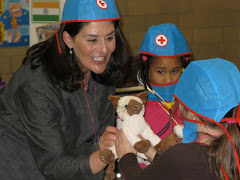Christensen & Karp
Unlearning the Myths That Bind Us
1. “delivered by children's books and movies, instructs young people to accept the world as it is portrayed in these social blueprints. And often that world depicts the domination of one sex, one race, one class, or one country over a weaker counterpart.” (p. 126)
Christensen, Karp and others in this article are making the point that if children have distorted views of people that are different from themselves, one area of factors contributing to this are the books that are read to them and T.V. shows and movies they watch which include “the messages or ‘secret education” creating these views. They claim there are values (not good ones) being gained as accepted knowledge as they watch their fairly tales. While they are read to sleep at night by their parents thinking the world is a safe, happy place they are being manipulated.
2. “I want students to critique portrayals of hierarchy and inequality in children’s movies and cartoons. Then I want to enlist them to imagine a better world, characterized by relationships of respect and equality.” (p.127)
The teacher is asking the High School students to now critique these movies and cartoons and learn more about respect and equality. This is a great lesson and project to give to students, very interesting and creative; I would thoroughly enjoy this class. It is important to teach respect and equality in school even beginning at the elementary level with age appropriate material. I appreciate the idea and the whole approach with the class on how the teacher goes about it.
3. “They were fueled by the opportunity to convince some parents of the long-lasting effects cartoons impose on their children, or to enlighten their peers about the roots of some of their insecurities. Instead of leaving students full of bile, standing around with their hands on their hips, shaking their heads about how bad the world is, I provided them the opportunity to make a difference.” (p.137)
The teacher realized the need to evolve the class. The students went from “ignorant and happy” to “factories of cynicism” and needed an outlet. Taking the knowledge they now gained from the “Unlearning the Myths That Bind Us” unit in their class and being able to apply it in real life gave them the outlet they needed to feel productive with their feelings.
I enjoyed this reading but I would be interested in reading more than the 12 pages to see more of what the authors advise people to do with regard to young children. Are there read and do not read lists of books? Are there the same for movies and Television shows? Is the information provided based on theories only or was there research and studies that found correlations between these claims. The books in my link I believe Dorfman, Christensen and others would approve of and also apply to many of the topics we have discussed in class to date.
Friday, March 5, 2010
Subscribe to:
Post Comments (Atom)

No comments:
Post a Comment